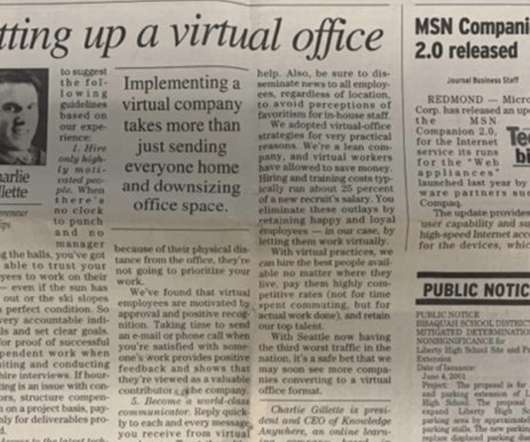5 Best Practices For An Effective Virtual Team Experience
NovoEd
SEPTEMBER 10, 2018
I clearly remember sitting on the edge of my seat, with the voices from motionless faces filling my small gray cubicle as I tried to find a good time between overlapping arguments to make my point. Working in virtual teams is hard. And yet, we can all agree that virtual collaboration is vitally important and is here to stay.

























Let's personalize your content